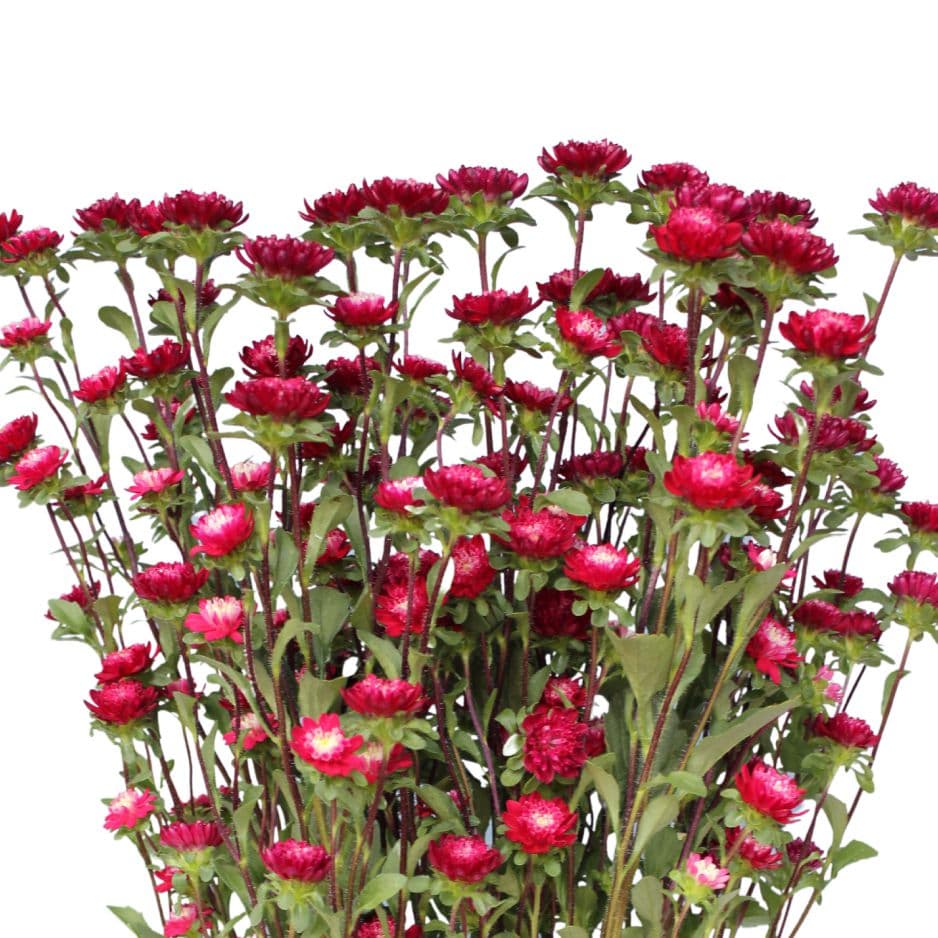Prohibited outside Japan
アスター
Cocotte red
Very small flower, dark red, good contrast in red outside and white-yellow center.
Information
- Breed Name
- ココットレッド
- Breed Number
- 25762
- Technical Name
- Callistephus chinensis
- House Name
- Compositae
- Japanese Name
- エゾギク
- Country Of Origin
- Northern China, Northeast China, East Turkestan, West Tibet, North Korea
- Suitable Temperature
- 15-20°C (59-86°F)
- Germination Days
- 6-8 days
- Seeding Rate
- 40㎖ for transplanting and 60㎖ for direct sowing
- Number Of Shares
- 1,800 copies
- Space Between Plants
- 15 x 15.4
Price
10㎖ / approx. 1,900 - 2,000 grains 10㎖/package/5,800 yen (6,380 yen including tax) Plug tray seedlings 375 seedlings (406 holes)/6,800 yen (7,480 yen including tax)
Feature
Aster is an annual plant, prefers cool climates and grows 30 to 100 cm tall. Flowering is markedly affected by daylength, with temperatures of 10-15℃ or higher and long daylight about 16 hours per day resulting in internode elongation, followed by short daylength about 8 hours, resulting in early flowering. Year-round production can be achieved by controlling temperature and day length.
Cultivation Feature
Continuous cropping is unsuitable, use the fields where never has Aster planted, or several years passed since the previous production. The soil type is not a particular issue as long as well-drained and full suns. Aster can be grown almost anywhere except at the extremely sandy soil or clay soil. If the soil is too acidic, wilting is likely to occur, so an optimum PH of 6.5 or less is recommended.
Suitable Place
Since the cultivar does not like continuous cropping, they should be planted where there is no history of cultivation of Aster or where a number of years have passed since the previous cultivation. At our farm, we plant once every four years and disinfect with chemicals once every three years and with steam disinfection before planting. The soil type is not a particular issue, as long as it is well-drained and exposed to sunlight. It can be grown almost anywhere except at the extremes of sandy soil and clay. If the soil is too acidic, standing wilt disease is likely to occur, so an optimum PH of 6.5 or less is recommended.
Temperature
The optimum temperature for growth is around 20°C, for germination is 15-20°C. Maintain temperature minimum of 10°C at night and a maximum of 25°C during daytime. High temperatures and humidity may cause a significant loss of quality.
Pests
Many diseases and insects parasitize aster, soil-borne diseases such as wilting and phytophthora. Nursery beds and fields should be thoroughly disinfected in advance. Once a field has been used for production, it is safer not to use again for long period of time. It should be paid attention to gray mold, leaf spot and a rust disease. Common pests are aphids, leafminer and leafhoppers.
Watering
The plants should be watered whenever soil dries out and avoid high humidity. In greenhouse, ventilation is necessary to avoid high humidity. Dense planting and high humidity will cause the stretchy stems and leaves, and less vase life. High temperatures and high humidity can cause a significant loss of quality.
Sowing
Sowing:
Optimal temperature for germination is 15°C to 20°C. 10 ml seeds contain 2,000 seeds. It takes 5 days to germinate. Seed quantity required per 10 1a=40 to 80 ml. Maintain temperature not exceed 25°C. 288 to 406 plug tray or seedling boxes are commonly used. Cotyledons will develop in 7 to 12 days. Excessive watering will delay germination and cause inconsistency.
Planting:
Transplant when 3 to 5 true leaves come out. The standard plant space is 12 cm x 12 cm to 15 cm x 15 cm apart, 4 to 6 rows. Planting and watering should be done carefully. Sloppy management may cause poor growth. Use one layer of trellis netting.

